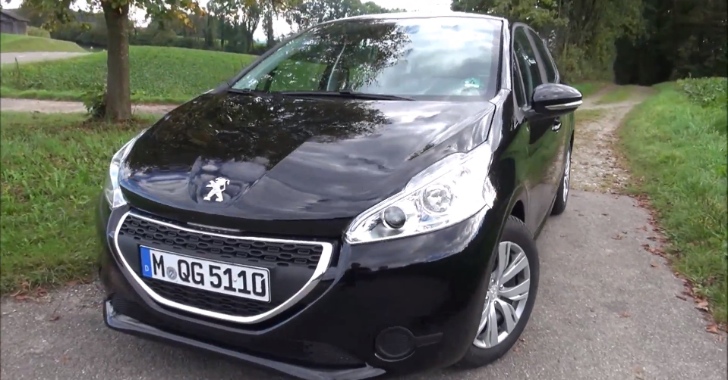The new Peugeot 208 is not so new any more, having launched back in 2012. Two years in this industry is half a lifetime, which is exactly why we're taking a second look at what is a best-seller. No, it's not the 208 GTi with its 200 horsepower turbo engine, but a diesel model capable of hugely impressive economy numbers, the 208 e-HDI diesel with 92 horsepower.
With the help of the next couple of videos posted on Youtube by user Blackygangsta, we're going to take a closer look at the pick of the Peugeot 208 range. The power for this car comes from a very familiar 1.6-liter diesel engine with a particle filter. Besides the 92 PS version, Peugeot also makes a 115 PS model, though it's only available on the very top trim model and thus costs around €2,000 extra. In any case, who buys a small diesel supermini for the power and performance?
In the all-important urban cycle, the 208 e-HDI is said to drink fuel at the rate of 4.5 liters every 100 kilometers (74.3mpg UK), equivalent to CO2 emissions of 98 grams. With a 0 to 100 km/h (62 mph) time of just 11 seconds, the car is nippy around town and has a decent-enough 185 km/h (115 km/h) top speed if motorway cruising is an issue.
As you can see from the video, the 1.6-liter e-HDI engine is quiet and refined when it wants to, but produces a sporty note that reverberates into the cabin. Unlike Peugeots of old, you can downsize from a 308 to this without feeling like you've downgraded.
The 208 is smaller than the 207 by 7 centimeters (around 3 inches). Despite this, the cabin boasts 5 centimeters (about 2 inches) of extra legroom and the trunk capacity is up by 15 liters to 285, on par with the Polo and 10 less than the Fiesta’s.
In the all-important urban cycle, the 208 e-HDI is said to drink fuel at the rate of 4.5 liters every 100 kilometers (74.3mpg UK), equivalent to CO2 emissions of 98 grams. With a 0 to 100 km/h (62 mph) time of just 11 seconds, the car is nippy around town and has a decent-enough 185 km/h (115 km/h) top speed if motorway cruising is an issue.
As you can see from the video, the 1.6-liter e-HDI engine is quiet and refined when it wants to, but produces a sporty note that reverberates into the cabin. Unlike Peugeots of old, you can downsize from a 308 to this without feeling like you've downgraded.
French flavor of cleverness
The Peugeot 208's biggest rivals are the VW Polo and the Ford Fiesta, both of which are available with frugal diesel engines of their own. But besides being arguably the cutest model in the segment, the 208 is also a great solution for getting around town.The 208 is smaller than the 207 by 7 centimeters (around 3 inches). Despite this, the cabin boasts 5 centimeters (about 2 inches) of extra legroom and the trunk capacity is up by 15 liters to 285, on par with the Polo and 10 less than the Fiesta’s.



